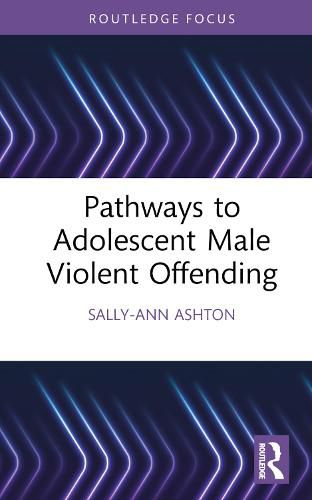Readings Newsletter
Become a Readings Member to make your shopping experience even easier.
Sign in or sign up for free!
You’re not far away from qualifying for FREE standard shipping within Australia
You’ve qualified for FREE standard shipping within Australia
The cart is loading…






This book differentiates between categories of adolescent male offending and explores the behavioural and social profiles of those who become involved inviolent offending and organized crime.
Using self-reported and arrest data, the book examines the key stages of male adolescent offending with a view to early recognition of behaviours that leave young men vulnerable to criminal exploitation and the escalation of violence. It also explains the importance of understanding crime motivations, how young men view themselves when they offend, and the emotions that they experience. Rather than looking at violent offending as a single category of behavior, the book helps readers differentiate between types of adolescent violence and understand the underlying psychological and social causes. It offers an insight into the journey of young people who are criminally exploited and those who become involved in committing acts of serious violence and organized crime. It does so by using data from official records, self-reported offending, and the narratives of young people. Each chapter focuses on a particular stage of offending with a view to early identification, support, and diversion.
Pathways to Adolescent Male Violent Offending is aimed at practitioners in youth offending services, youth work, policing, and education. It will also be useful for students of forensic and investigative psychology, criminal justice, policing, and child and adolescent mental health.
$9.00 standard shipping within Australia
FREE standard shipping within Australia for orders over $100.00
Express & International shipping calculated at checkout
This book differentiates between categories of adolescent male offending and explores the behavioural and social profiles of those who become involved inviolent offending and organized crime.
Using self-reported and arrest data, the book examines the key stages of male adolescent offending with a view to early recognition of behaviours that leave young men vulnerable to criminal exploitation and the escalation of violence. It also explains the importance of understanding crime motivations, how young men view themselves when they offend, and the emotions that they experience. Rather than looking at violent offending as a single category of behavior, the book helps readers differentiate between types of adolescent violence and understand the underlying psychological and social causes. It offers an insight into the journey of young people who are criminally exploited and those who become involved in committing acts of serious violence and organized crime. It does so by using data from official records, self-reported offending, and the narratives of young people. Each chapter focuses on a particular stage of offending with a view to early identification, support, and diversion.
Pathways to Adolescent Male Violent Offending is aimed at practitioners in youth offending services, youth work, policing, and education. It will also be useful for students of forensic and investigative psychology, criminal justice, policing, and child and adolescent mental health.